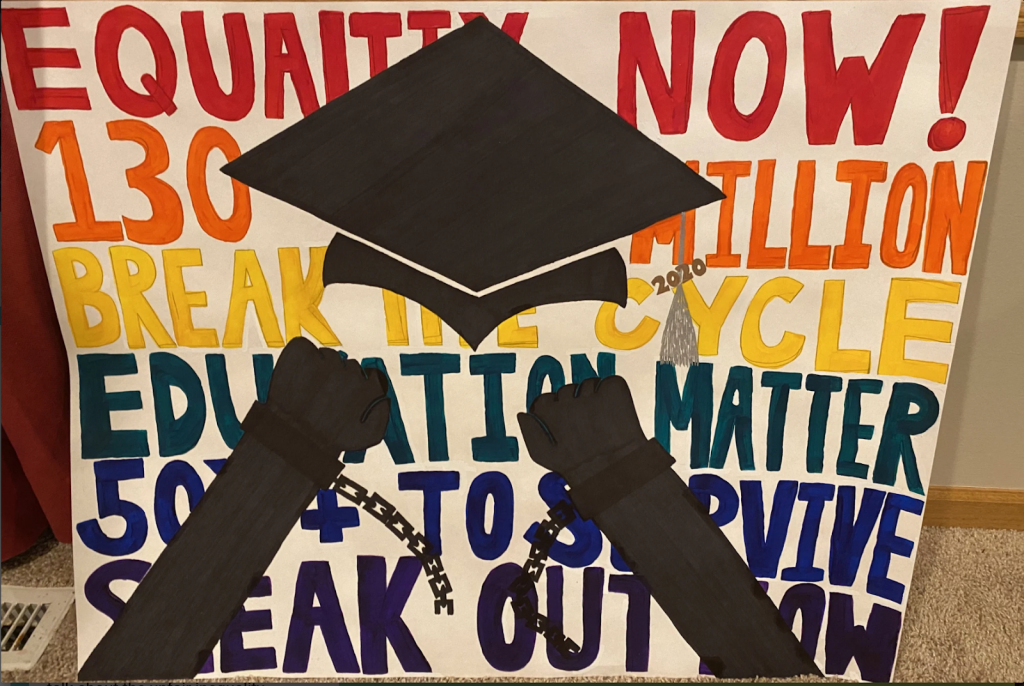Students in Senior Teaching Specialist, Linda Buturian’s course, CI 1032: “Creating Identities: Learning in and through the arts” spent this spring semester discovering how to use art as a means to understand social issues and inspire change. Students created and analyzed art to understand how personal and social identities impact the ways in which people learn. The final project, some of which are highlighted here, asked students to use the creative medium of their choice to reflect on a social justice issue.
Several B.S. in elementary education foundations majors and others in the course, focused their project on education-related issues, combining their passion for social justice in education with an art-based approach to expression. Featured below are a sampling of final projects:
La Lucha Sigue. ¡Si Se Puede! by Gisell Ayala-Corral
Artist Statement:
“For my final project I have decided to focus on the topic of climate justice. Climate justice is used to emphasize that climate change is an issue that is both political and ethical and not just an issue that is simply related to nature and the environment. Climate justice seeks to bring awareness about how climate change disproportionately affects minorities, especially in the US. Climate change is a big issue that affects everyone, but minorities are hit harder. If you are a person of color, you are more likely to be living in places where there are more floods and are impacted the most by natural disasters and you’re even at a higher chance of getting different climate-related diseases.”
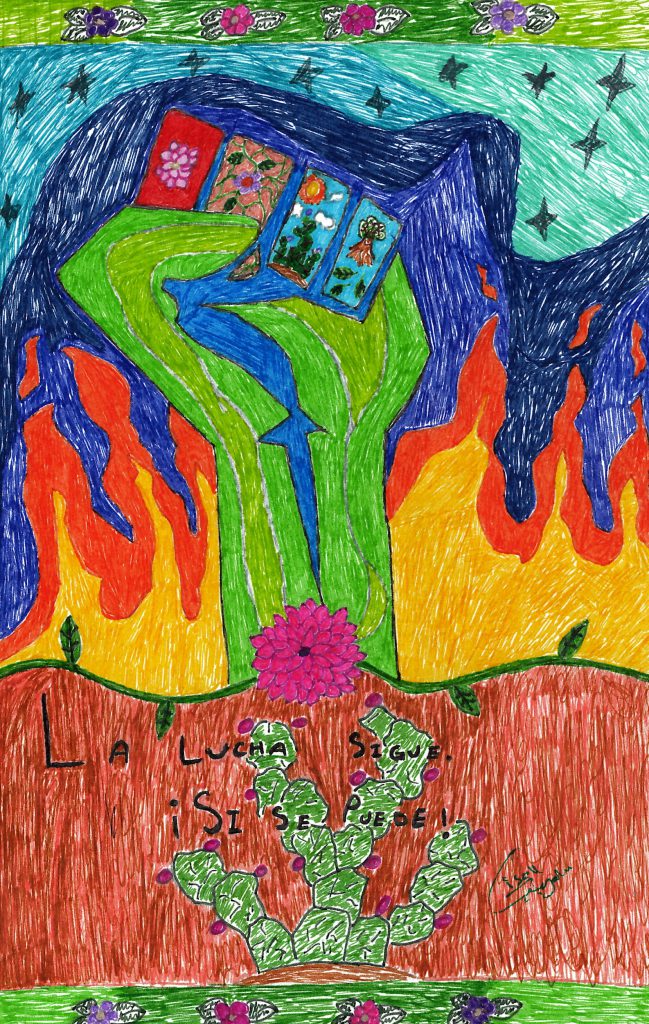
The Beauty of Not Having a Plan, by Michael Del Conte, B.S. in elementary education foundations
Artist Statement:
“In the last month, the effects of the virus on our lives has become too much to ignore. It felt wrong to not adjust my project to analyze what has happened in regards to Covid-19. As an education major, I am very interested by how this disease has affected higher education and the future of schooling in general. To get a sense of how Covid-19 has affected the higher ed landscape in the United States, I interviewed 8 friends who go to different schools about their experiences dealing with online classes, social isolation, and the jarring adjustment to a new lifestyle…. After these conversations I decided that instead of stressing myself out by coming up with another plan for Covid-19 to unravel, I’m going to try to find peace of mind in not having a plan. Not having a plan isn’t giving up, or being unprepared in our current climate. It means rolling with the punches, and making spontaneous choices without the paralyzing fear of failure. I’m looking into jobs and opportunities for this summer that I never had considered doing before, mainly because I was scared of the risk. In the end, the poem/journal that I ended up writing for my project is nowhere close to where I started my project, but I’m glad I got there. And the main takeaway is that I only got there, because I was willing to deviate from the plan.”
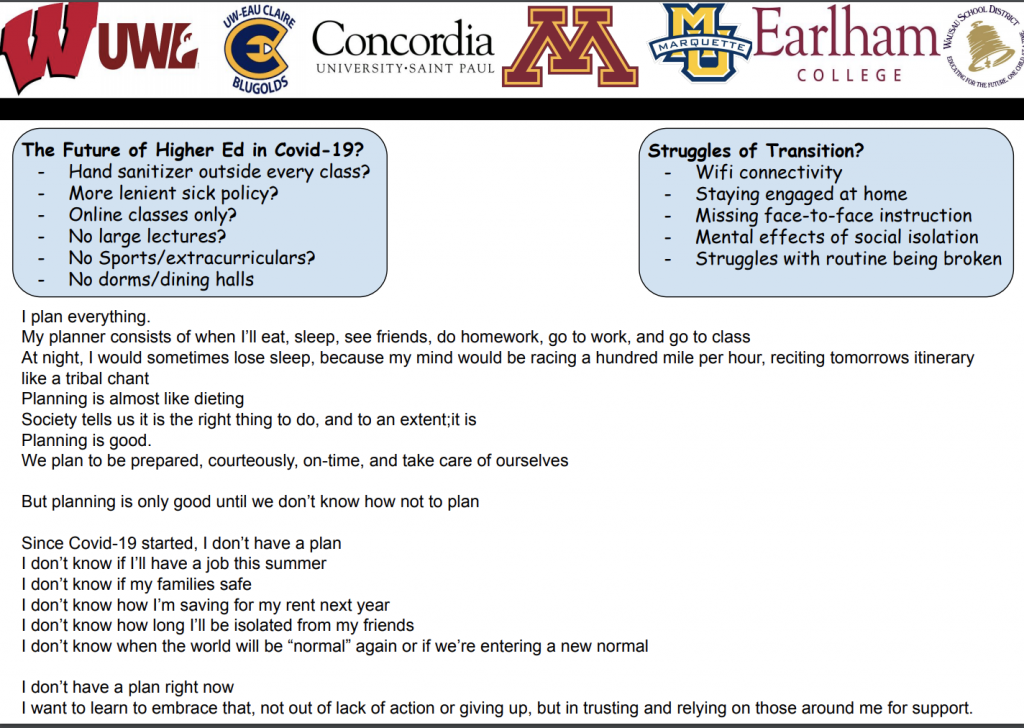
School-to-Prison Pipeline, by Brooke Gruidl, B.S. in elementary education foundations
Artist Statement:
“I want my art to bring awareness to a topic that is very prevalent and affecting so many people’s lives. As a future educator, it took me until college to hear about the school-to-prison pipeline. I wonder if the school-to-prison pipeline was more invisible for me and maybe more evident for students of color growing up? To my future educators, I want us to advocate for our students, we know our students more than any resource officer or administrator, and this allows us to have more of a position to keep students in the classroom. It might not always be easy but taking a more responsive, less punitive approach in the classroom, giving students more of an opportunity to complete their education.”
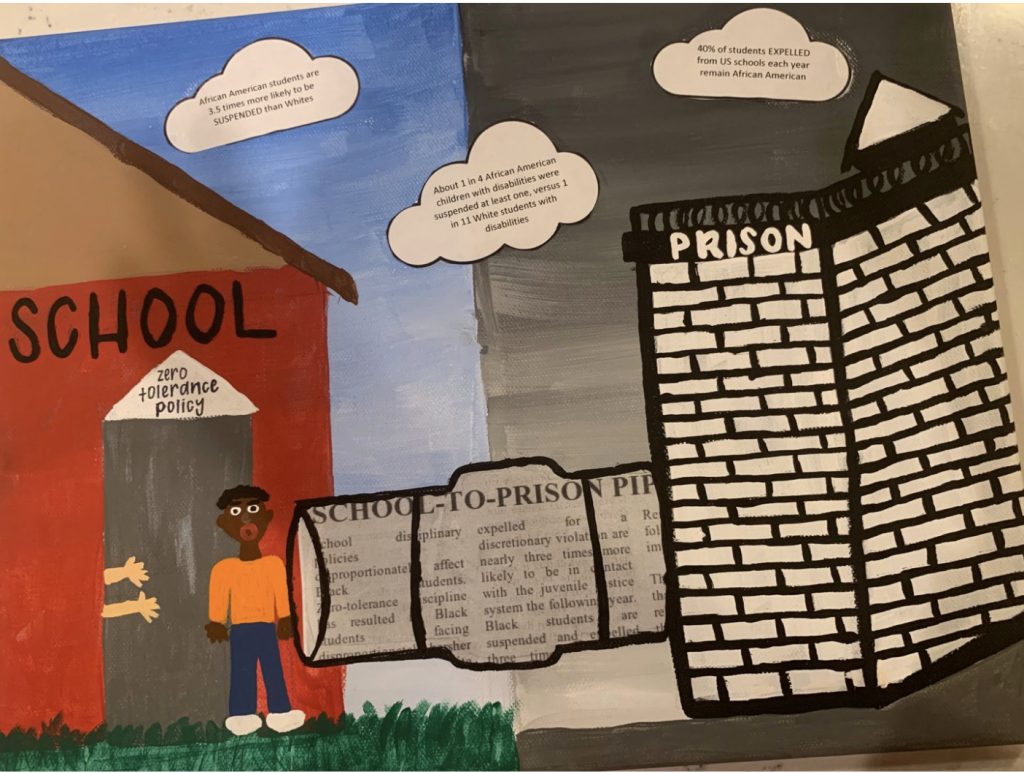
Stay at Home is not Safe at Home, by Caroline Gosselin, B.S. in elementary education foundations
Artist Statement:
“My hope for my art is to get people to take a step back from all the graphs and numbers being thrown around about the COVID-19 pandemic and realize the lives behind it. I hope that they think about all the kids being displaced from schools and all the staff, peers, and resources they were consistently offered. I would hope to let people realize the privilege they have if they are in a safe environment with a consistent food supply and a parent or two that can help them with school work because for a large majority of kids that is not the same case. And finally I hope that after their self reflection that they think about ways they can aid their community when it is time, whether it’s through food bank donations, steps to clean community parks, or volunteering at neighborhood schools as they open up to become a protective source again for their children and families.”
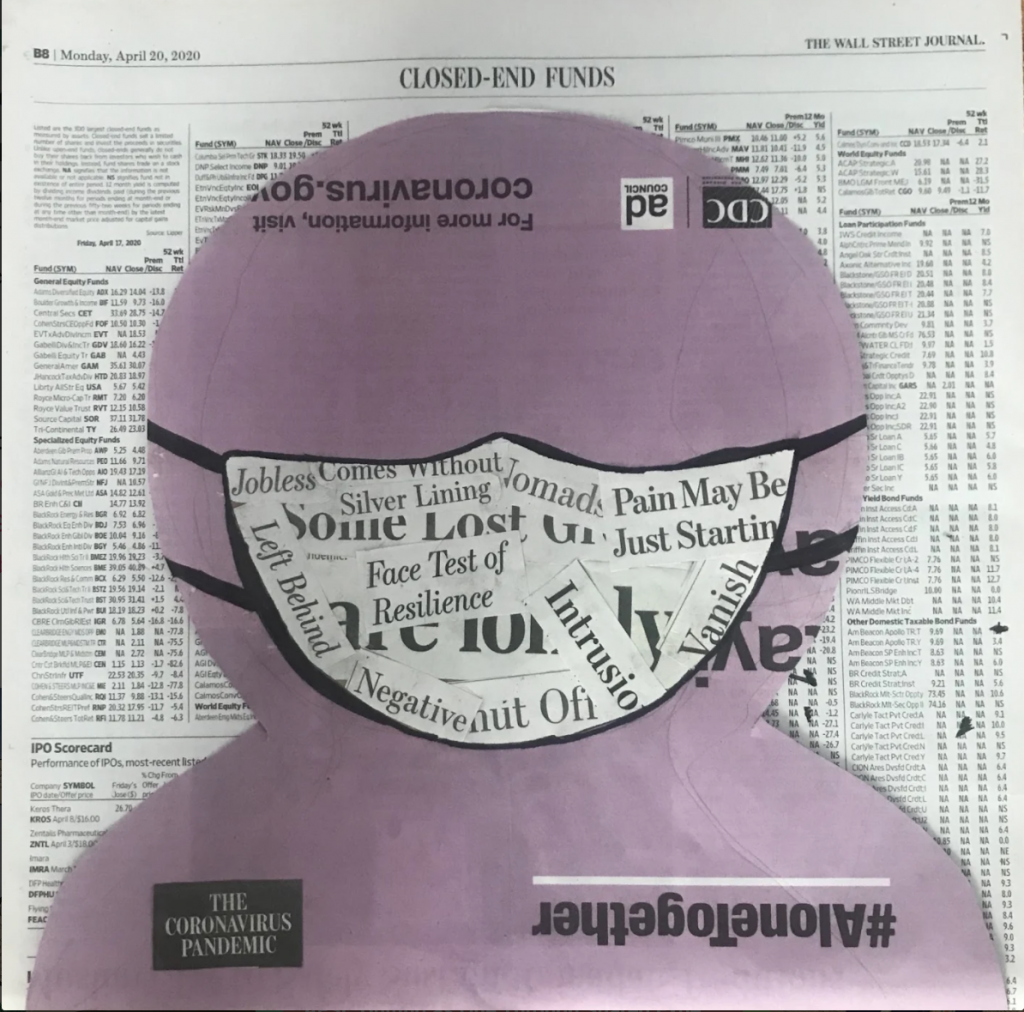
Little Gifts of Hope, by Donna Luu, B.S. in biochemistry
Artist Statement:
“Hello my name is Donna Luu and my AFSC project focuses on children’s access to school supplies like booklets, uniforms, pens and pencils. Specifically, I wanted to understand how the attainment of school supplies affects the lives of children in rural areas of Vietnam. According to a report released in 2018 by OXFAM, which is a global organization aimed towards ending the injustice of poverty, one’s social mobility is greatly affected by their access to education. In having a post-high school education a 23% increase is seen in one’s economic mobility, while those who had less than a post-high school education had only an 8% increase in mobility (OXFAM). Furthermore, according to a report found in the Library of Congress, there was more than an 80% difference in the enrollment of primary school between rural and urban areas. In some rural areas it was found that only 10 to 15% of children stayed enrolled in primary school after third grade. While in urban areas almost 96% of children enrolled and completed fifth grade(LOC). These striking differences on the education obtained highlights the importance of encouraging education in rural areas for the children of Vietnam.”
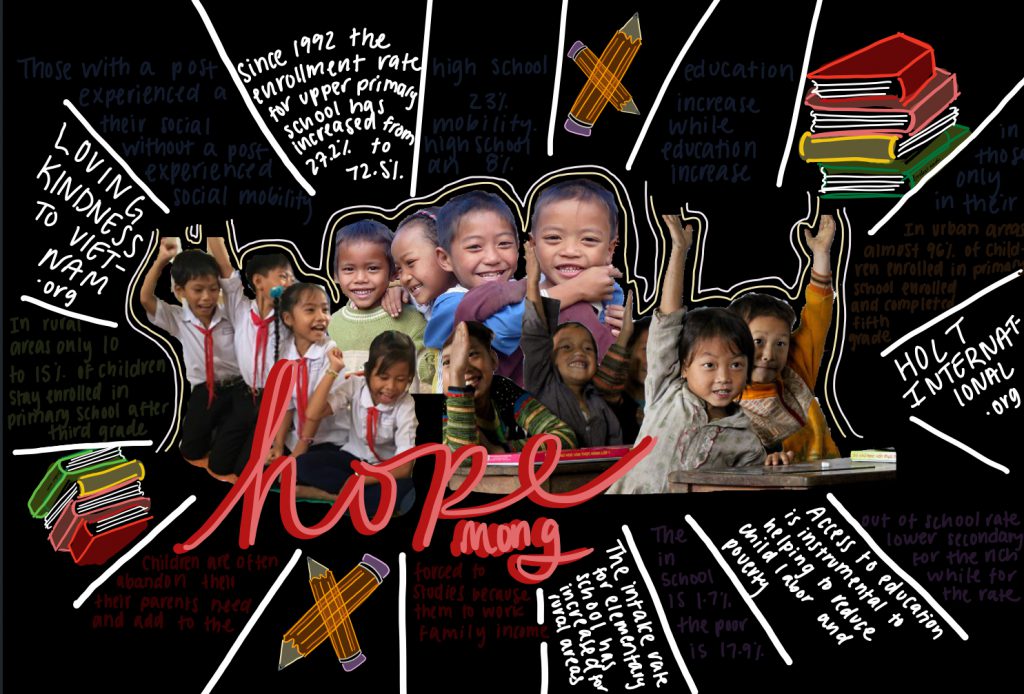
In Tests We Trust, by Erin Meyers, B.S. in elementary education foundations
Artist statement:
“This project focuses primarily on how the results of standardized tests are used for accountability measures that have direct impacts on the funding and resources that schools and districts are allocated. Under this system, schools become caught in a perpetual loop of repetitive results, leading to inequitable resources. The hope is that by creating art in response to this issue, I can increase awareness and unify voices into a call to change the way society categories and “punishes” so called failing schools. As a society we need to contemplate what is a true measure of student success and determine how we can change accountability measures so that they truly ensure all students have a real chance to succeed.”
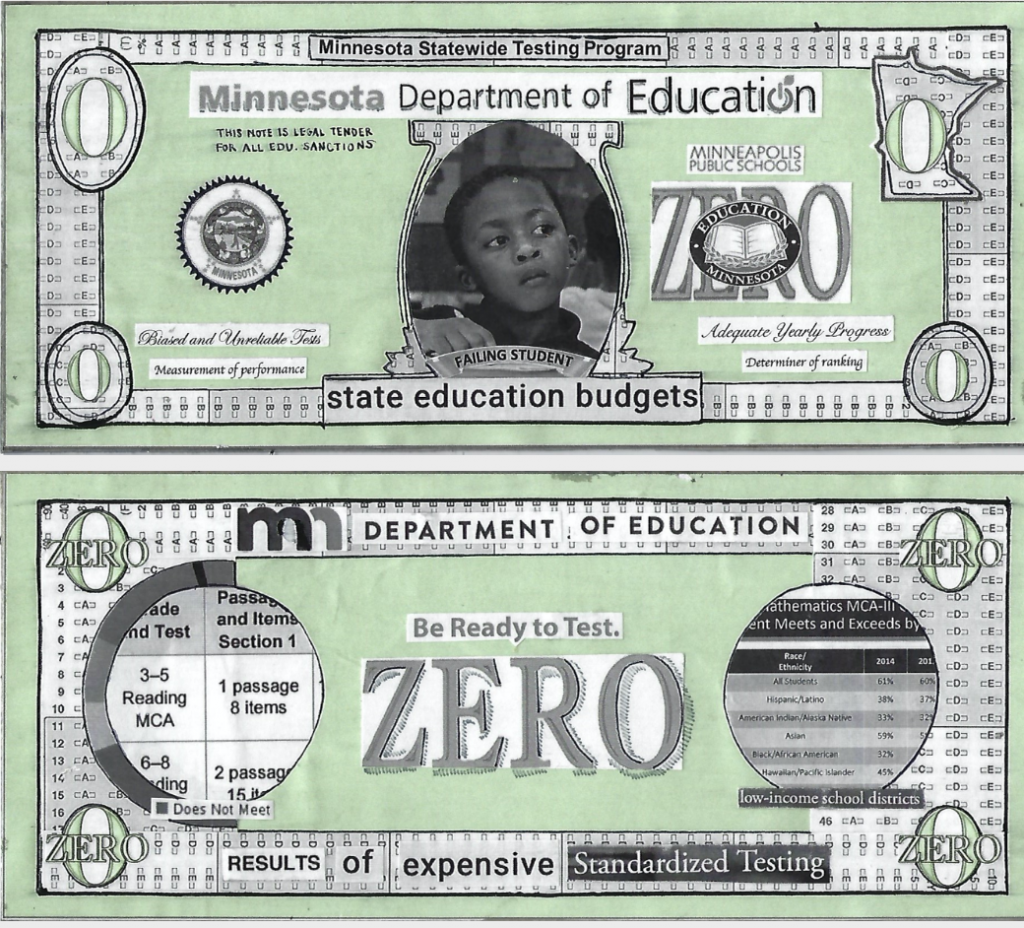
One Amongst Many, by Max Moynihan, B.S. in elementary education foundations
Artist Statement:
“My name is Max Moynihan and I am a pre-service teacher studying elementary education at the University of Minnesota. Teachers have always been a part of my life. There are five teachers amongst my extended family, with one of them being my mother. Amongst all of my family members, none of them are male. My artistic medium is titled, “One Amongst Many” due to my inspiration to research male teachers with the low amount in the schools and their impact on students, mainly boys. Prior to the project I knew very little about my topic. After going through with my research I learned some pretty interesting facts regarding the decrease in male teachers. While making my artistic medium, my proudest moment was the way it turned out. I took my time making sure there weren’t any mistakes. I also love how bright the colors are able to pop out and grab the viewer’s attention.”
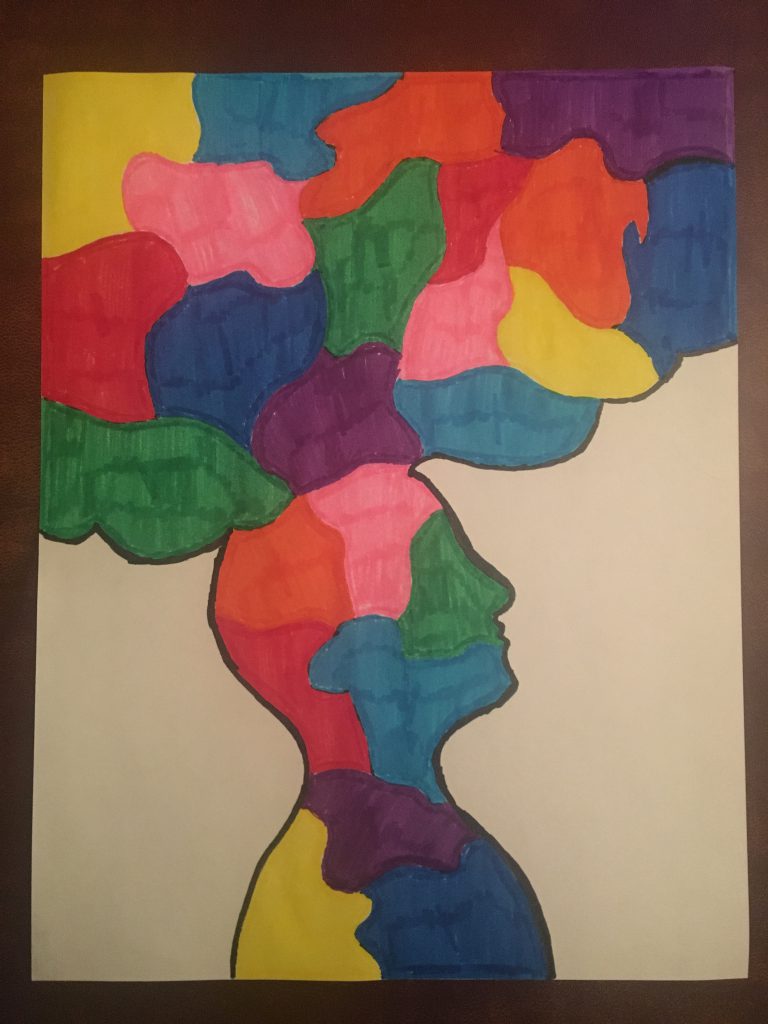
Books and Pencils, the Most Powerful Weapons, by Kara Schwenn, B.S. in elementary education foundations
Artist statement:
“This piece was inspired by my research about equal access to education for girls around the world. While learning about my topic I learned about the inequality of women’s education worldwide which is often hidden by the fast-paced American media. Before learning about my topic I understood many women do not have access to education for multitudes of reasons. After doing my research and the assignment I learned about the severity of these women’s situations. The number of women who do not receive education and why shocked me. These women’s stories are disturbing and vulnerable which makes me respect them. Women like Malala have risked their lives for an education but for every well-known story like Malala’s, there are hundreds of untold stories.”
